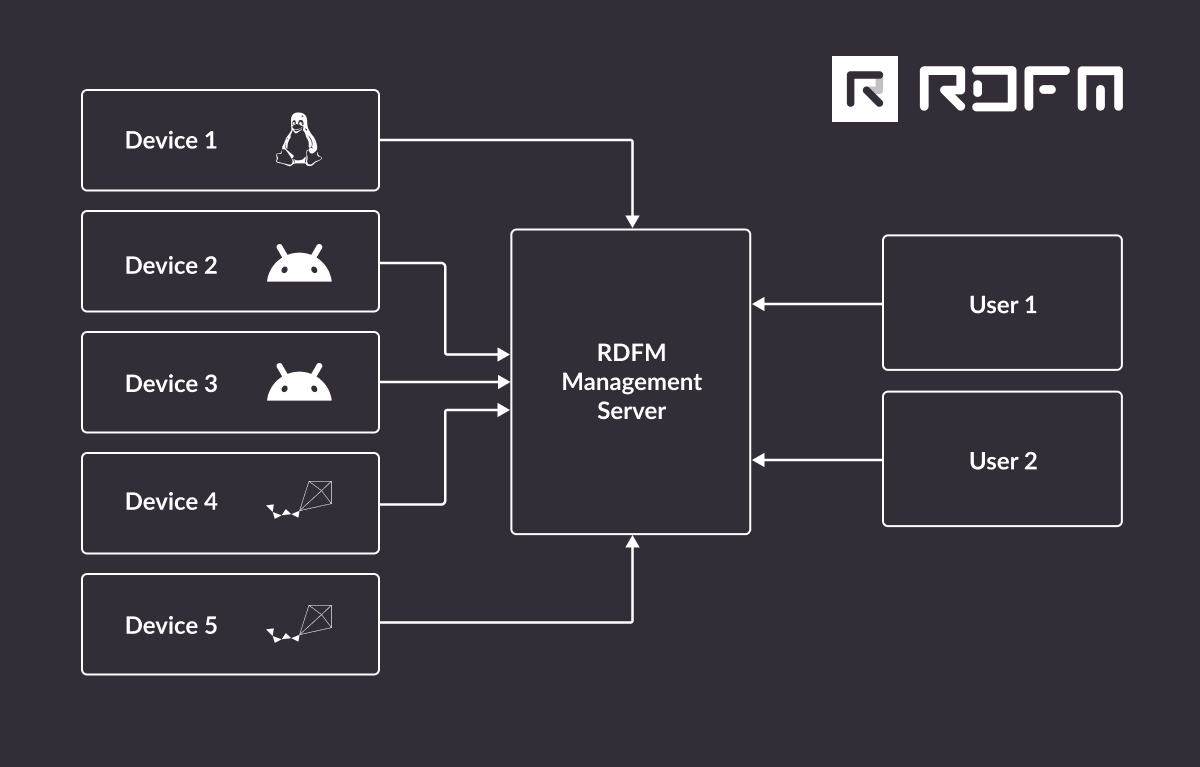System Architecture¶
The reference architecture of an RDFM system consists of:
RDFM Management Server- handles device connections, packages, deployment, remote device managementDevices- devices connect to a central management server and utilize the exposedREST APIand device-server RDFM protocol for providing remote management functionalityUsers- individual users that are authenticated and allowed read-only/read-write access to resources exposed by the server
The system architecture can be visualized as follows:

Figure 1 Summary of the system architecture¶
HTTP REST API¶
For functionality not requiring a persistent connection, the server exposes an HTTP API. A complete list of available endpoints can be found in the RDFM Server API Reference chapter. The clients use this API to perform update checks.
Device-server RDFM Protocol¶
The devices also maintain a persistent connection to the RDFM Management Server by utilizing JSON-based messages sent over a WebSocket route. This is used to securely expose additional management functionality without directly exposing device ports to the Internet.
Each message sent using the RDFM protocol is structured as follows:
0 h
+----------------------------+
| utf-8 encoded JSON message |
+----------------------------+
The message is a UTF-8 encoded JSON object, where each message is distinguished by the mandatory 'method' field.
An example request sent to the server may look like:
{'method': 'capability_report', 'capabilities': {'shell': True}}
A response from the server may look like:
{'method': 'alert', 'alert': {'devices': ['d1', 'd2']}}